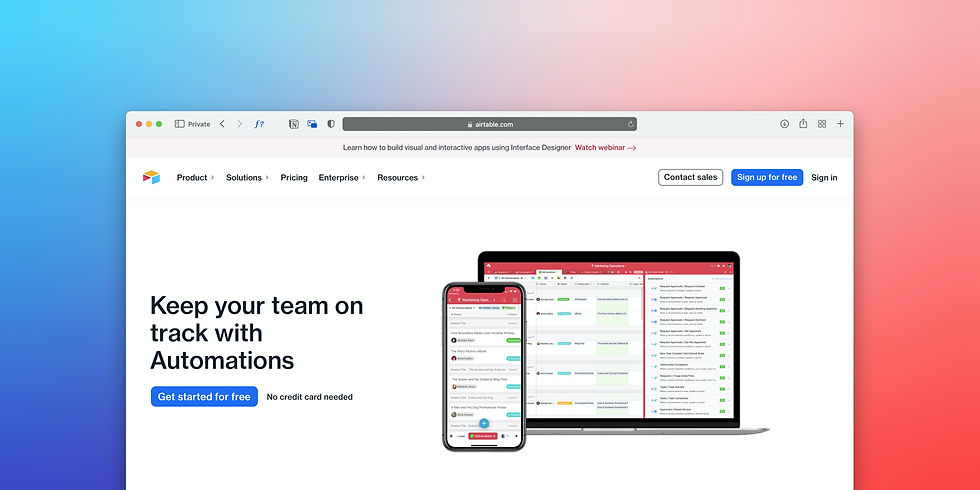How to Improve the Client Onboarding Process in 4 Ways
- Marie Lewis

- Jul 19, 2022
- 4 min read
You are on the right track if you are already thinking about how to improve the client onboarding process. It means you have heard and internalized the fact that it costs 5-25 times more to gain a new customer than keep an existing one.
Or you appreciate the need to minimize the churn rate in your business. Based on the understanding that customer onboarding forms a large part of the overall customer experience. And customer experience is the deciding factor for 73% of consumers in purchasing decisions and loyalty.
With all these benefits in mind, let’s focus on how you can get it right with the client onboarding process.

Why Would You want to Improve Client Onboarding Process?
We may have mentioned that the cost of acquiring a new customer is high. However, retaining the existing customers is not an easy ride either.
But when you do client onboarding the right way, it eases things for you a little more. It sets the pace for your future relationship with the customer. It is also essential in increasing the customer lifetime value.
Remember, you have two primary objectives to accomplish with the client onboarding process. The first is to get the customer to understand how to use the product. The other is to get value from your products in the quickest time.
The idea is to get your new client to experience the“aha” moment of delight when they experience your product’s benefits firsthand. Only then will you have tasted the short-term success of your client onboarding process.
Also, you can measure the long-term success of your client onboarding process using the customer lifetime value. It is a metric that indicates the total revenue a business can reasonably expect from a single customer account throughout the business relationship. The longer the client stays with the company, the longer their customer lifetime value.
So what can you do to ensure your client onboarding process improves the customer lifetime value and minimizes the churn rate?
1. Start the Onboarding Process Early
There is often confusion about when the client onboarding process should begin. The common notion is that the process starts when the new client signs the contract documents. Ideally, the process begins during the signup process of your leads.
Starting the onboarding process this early improves your lead conversion rate. Imagine being able to start the customer journey with your clients this early? It gives them ample time to grow into your product.
Moreover, starting the process early gives you ample time to take your customer on a product tour to familiarize them with any service or software involved. Therefore, the client may reach their customer “aha” moment sooner. It is part of why some businesses offer free trial periods for their products.
2. Automate the Process

It is probably the most critical improvement you need to make in your client onboarding process. The best onboarding results are when the process is efficient for the customer and you.
You will need automated CRM systems like Dubsado or ClickUp to manage your customers effectively. You need to integrate the client into these systems early and offer them a tutorial on how to use the software.
Also, a successful onboarding process will require you to send your new client a welcome email. It will be the first of a series of subscription emails you send your client as the relationship progresses.
Of course, you don’t expect to prepare and send these many emails manually. You will need to automate the process using MailChimp or MailerLite.
3. Personalize the Process for Each Customer
The benefits of starting the onboarding process earlier enough may pay off sooner than you think. Starting the process earlier means you will have enough time to research your client. That includes information about their industry and main competitors.
You will need this information to personalize your services to the client. Also, if the client is on the mailing list, it will be possible to include relevant content in their emails.
Learning about the client’s industry and competitors minimizes the client churn rate. It becomes easier for you to understand the specific needs your clients expect to satisfy by using your product or services. Therefore, it will also be possible to include recommendations on deriving more value from your products and services.
4. Schedule an Onboarding Meeting

Aren’t you glad that you can automate the whole of your automation process? It’s great but does not allow the technology to let you lose the human touch with your customer.
You may be a busy entrepreneur but not too busy to schedule an hour meeting with your new client. It feels like a warm personal welcome when the customer is welcomed into the group by the real owner of the business.
You can accomplish more in this hour than you think. It will be the right time for the client to share their specific goals and needs. That effectively spells out their expectations in greater detail.
On the other hand, it will be an ideal opportunity for you to explain to the client how to use the various systems and software. The client can also ask for relevant clarifications on the various issues related to your product or services.
It is also the right meeting to discuss issues such as timelines, milestones, and deadlines together. That entails also determining the KPIs you will use to measure the success of your projects.
Install the Right Systems to Improve Your Client Onboarding Process
There are no shortcuts to improving your client onboarding process. It has to start with automating and streamlining your systems to ensure the process is efficient.
On the bright side, we will help you with this part. Select your automation system package and we will have your systems up and running in no time.






-min.png)




Comments